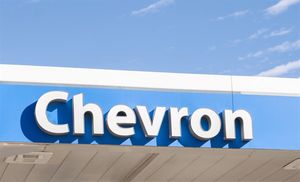
Industrial component provider Timken (NYSE: TKR) reported Q1 CY2025 results exceeding the market’s revenue expectations, but sales fell by 4.2% year on year to $1.14 billion. Its non-GAAP profit of $1.40 per share was 1.7% below analysts’ consensus estimates.
Is now the time to buy TKR? Find out in our full research report (it’s free).
Timken (TKR) Q1 CY2025 Highlights:
- Revenue: $1.14 billion vs analyst estimates of $1.13 billion (4.2% year-on-year decline, 1.1% beat)
- Adjusted EPS: $1.40 vs analyst expectations of $1.42 (1.7% miss)
- Adjusted EBITDA: $208.1 million vs analyst estimates of $211.7 million (18.2% margin, 1.7% miss)
- Management lowered its full-year Adjusted EPS guidance to $5.35 at the midpoint, a 3.6% decrease
- Operating Margin: 12.6%, down from 15.5% in the same quarter last year
- Free Cash Flow Margin: 2.1%, up from 0.4% in the same quarter last year
- Organic Revenue fell 3.1% year on year (-9.2% in the same quarter last year)
- Market Capitalization: $5.13 billion
StockStory’s Take
Timken’s first quarter results reflected ongoing demand softness in several core markets, with leadership noting particular pressure in Europe and the Americas. CEO Richard Kyle cited successful execution on targeted cost controls and highlighted continued growth in Asia, especially in wind energy, as partial offsets to lower volumes and unfavorable product mix. He acknowledged that “adjusted EBITDA margins came in below prior year, driven primarily by lower volumes, higher manufacturing costs and unfavorable mix.”
Looking ahead, management lowered full-year adjusted earnings guidance, primarily due to the impact of newly implemented tariffs and persistent industrial market headwinds. Kyle and CFO Phil Fracassa emphasized active pricing actions to pass through tariff costs, but acknowledged that the full benefit will not be realized until late in the year. Kyle described the company’s approach as “quickly responding and actively passing the cost into the market,” while also reaffirming the goal of $75 million in cost savings for 2025. The team characterized the external environment as fluid and uncertain, particularly around evolving trade policy.
Key Insights from Management’s Remarks
First quarter performance was shaped by lagging demand in key geographies, cost inflation, and early-stage tariff impacts, with management focusing on offsetting these challenges through pricing and operational discipline.
- Geographic Demand Shifts: Timken experienced lower demand in Europe and the Americas, while Asia—especially China—benefited from improved renewable energy activity, with wind sector demand rebounding off a low base.
- Tariff Mitigation Efforts: Leadership detailed rapid repricing initiatives to offset new tariffs, aiming to fully neutralize the cost impact by year-end. Rich Kyle noted the company’s large U.S. manufacturing footprint offers some relative advantage, though there will be a net headwind of approximately $25 million in 2025 due to lagged pricing adjustments.
- Automotive OEM Portfolio Review: Management began a strategic review targeting more than half of its automotive original equipment (OE) business, concentrating on light vehicles. The goal is to improve margins by reducing exposure to lower-return segments, with anticipated benefits materializing in 2026 and 2027.
- Cost Containment and Acquisition Benefits: The CGI acquisition continued to contribute positively to segment margins. Ongoing cost reduction initiatives, including SG&A savings, helped partially offset higher manufacturing and logistics costs.
- Manufacturing Footprint Adjustments: The closure of the Fort Scott facility is progressing, with full shutdown expected in the third quarter. This move is intended to streamline operations and improve Industrial Motion segment margins as duplicative costs are eliminated.
Drivers of Future Performance
Management’s outlook for the remainder of the year centers on tariff pass-through, cautious demand assumptions, and operational improvements to support margins in a challenging environment.
- Tariff Pricing Pass-Through: The company is actively implementing pricing increases and surcharges to offset tariff costs, with management expecting to achieve full mitigation on a run-rate basis by year-end. Most of this impact will be felt in the second and third quarters.
- Portfolio Restructuring: The ongoing reduction in automotive OE exposure is expected to enhance corporate margins beginning in 2026, with limited financial effect in 2025. Management believes these changes will support a more profitable and resilient business model in the medium term.
- Raw Material and Cost Pressures: Timken anticipates continued upward pressure on steel and specialty bar quality (SBQ) pricing, which could drive further price actions and margin volatility. However, management views the company’s pricing power and portfolio diversity as partial offsets to these risks.
Top Analyst Questions
- Bryan Blair (Oppenheimer): Asked about the underlying volume and price assumptions in the revised guidance. CFO Phil Fracassa explained that improved pricing, largely from tariff pass-through, was offset by a more cautious volume outlook, especially within the Industrial Motion segment.
- Stefan Diaz (Morgan Stanley): Inquired whether customers accelerated orders ahead of tariffs. Fracassa responded that there was no significant evidence of demand pull-forward, noting most products for U.S. customers are domestically produced.
- Stefan Diaz (Morgan Stanley): Sought details on the strategic review of the auto OE business. CEO Richard Kyle clarified the focus is on reducing exposure to lower-margin light vehicle OEMs, with actions expected to improve margins from 2026 onward.
- Kyle Menges (Citi Group): Questioned Timken’s ability to pass through tariff-related pricing compared to competitors. Management said industrywide bearing prices are rising, and Timken’s U.S. manufacturing footprint could offer a relative advantage.
- Chris Dankert (Loop Capital Markets): Asked about the status of the Fort Scott facility closure and implications for segment margins. Kyle confirmed the facility is on track to close in the third quarter, which should benefit Industrial Motion margins.
Catalysts in Upcoming Quarters
Looking ahead, the StockStory team will be closely monitoring (1) the pace and effectiveness of tariff-related price increases across Timken’s customer base, (2) progress in executing the auto OEM portfolio restructuring and any early signs of margin improvement, and (3) stabilization or recovery in key end markets, particularly industrial sectors in Europe and the Americas. The evolution of raw material costs and further updates on facility rationalizations will also be important signposts for operational performance.
Timken currently trades at a forward P/E ratio of 12.9×. In the wake of earnings, is it a buy or sell? The answer lies in our free research report.
Our Favorite Stocks Right Now
Donald Trump’s victory in the 2024 U.S. Presidential Election sent major indices to all-time highs, but stocks have retraced as investors debate the health of the economy and the potential impact of tariffs.
While this leaves much uncertainty around 2025, a few companies are poised for long-term gains regardless of the political or macroeconomic climate, like our Top 5 Growth Stocks for this month. This is a curated list of our High Quality stocks that have generated a market-beating return of 176% over the last five years.
Stocks that made our list in 2020 include now familiar names such as Nvidia (+1,545% between March 2020 and March 2025) as well as under-the-radar businesses like the once-small-cap company Comfort Systems (+782% five-year return). Find your next big winner with StockStory today.







